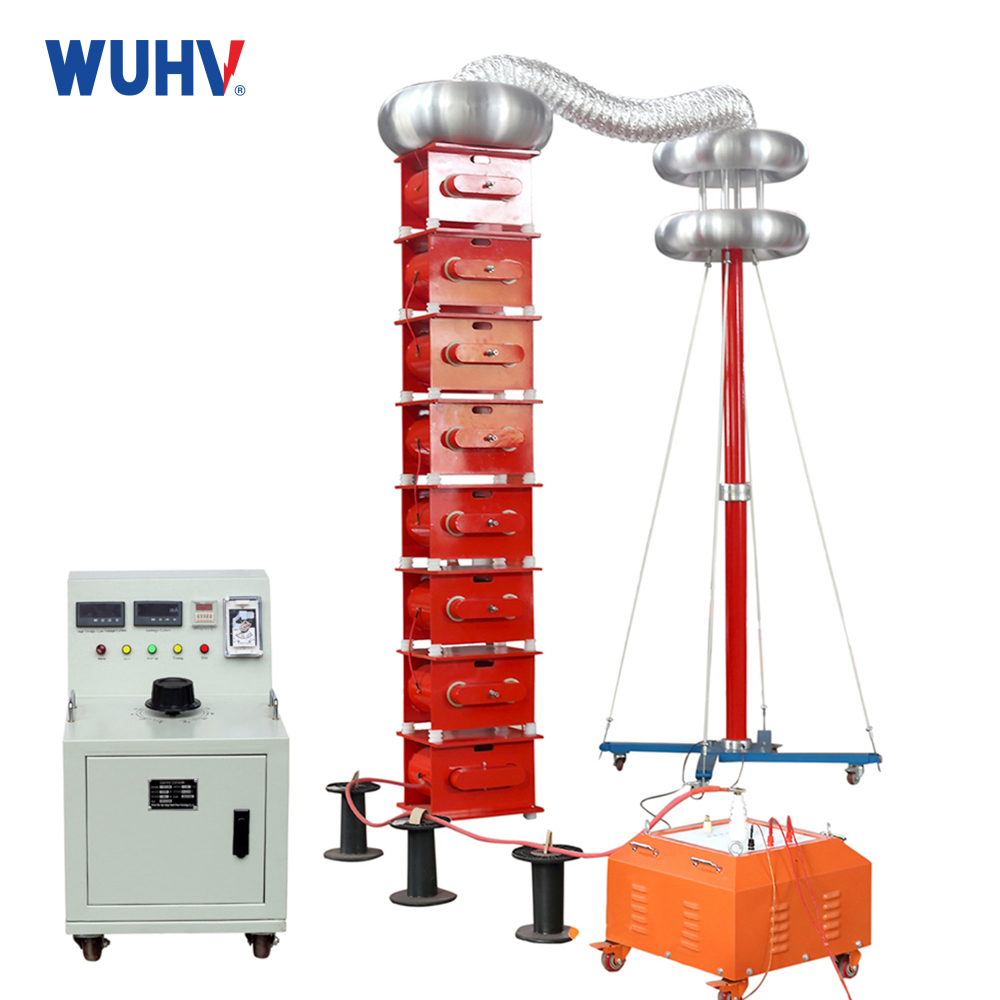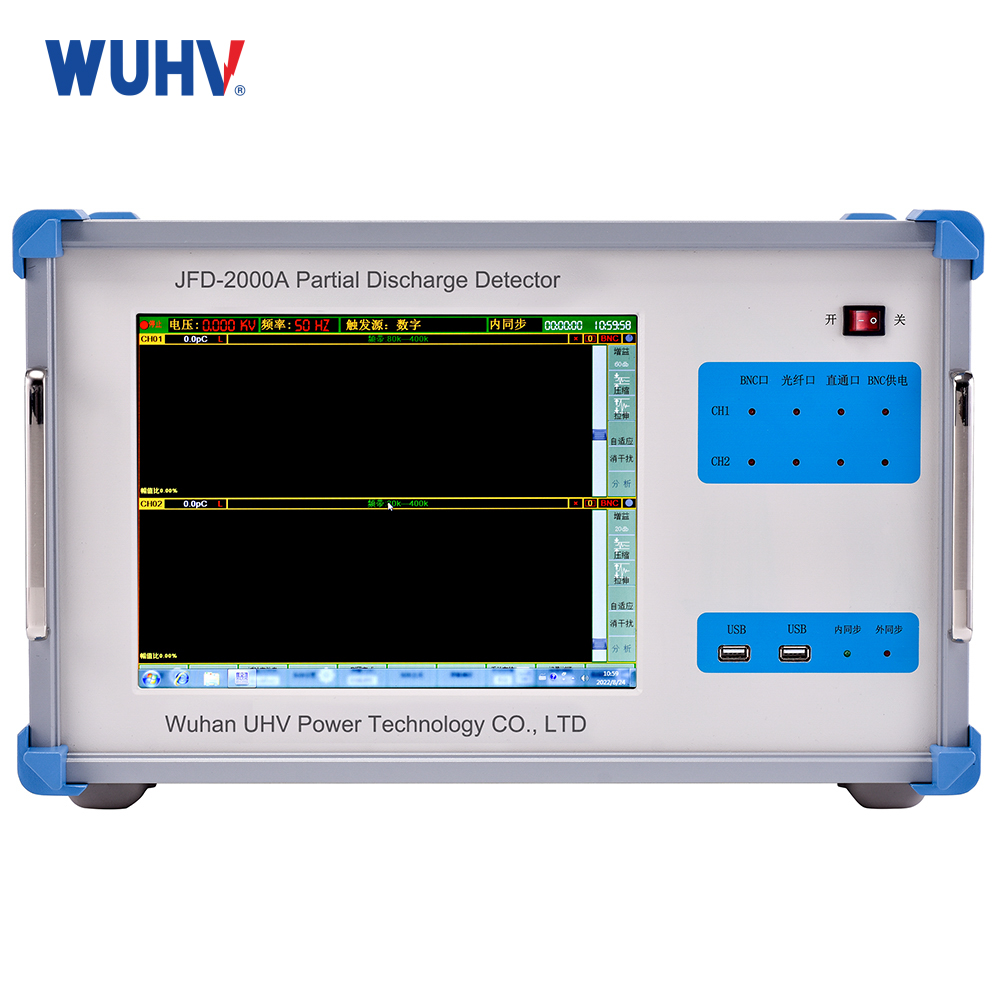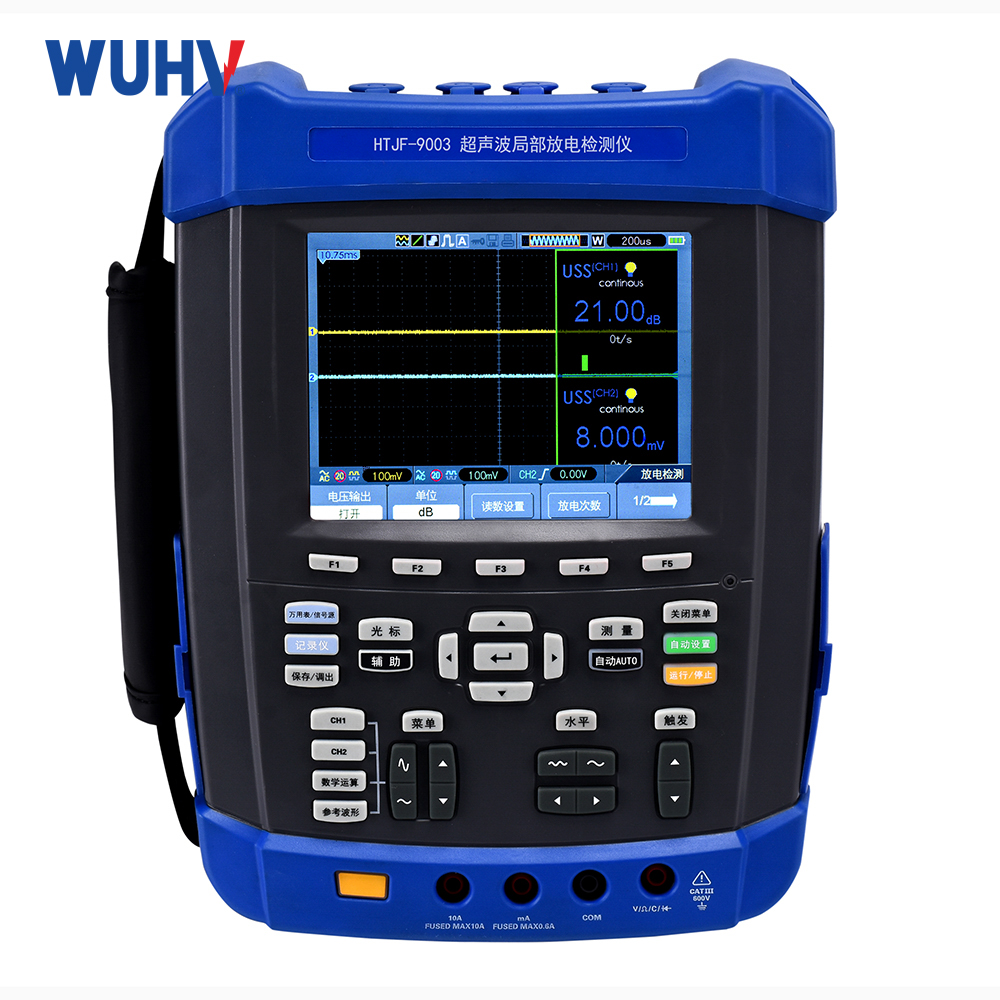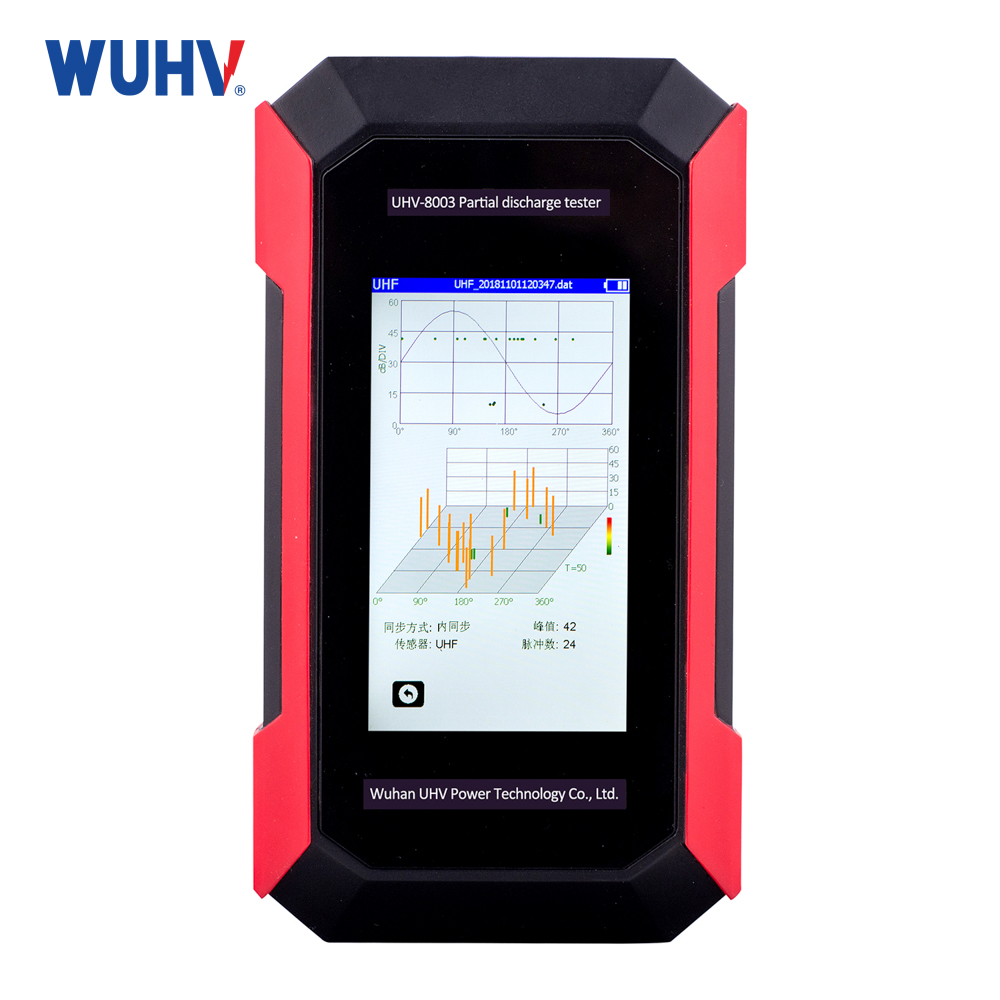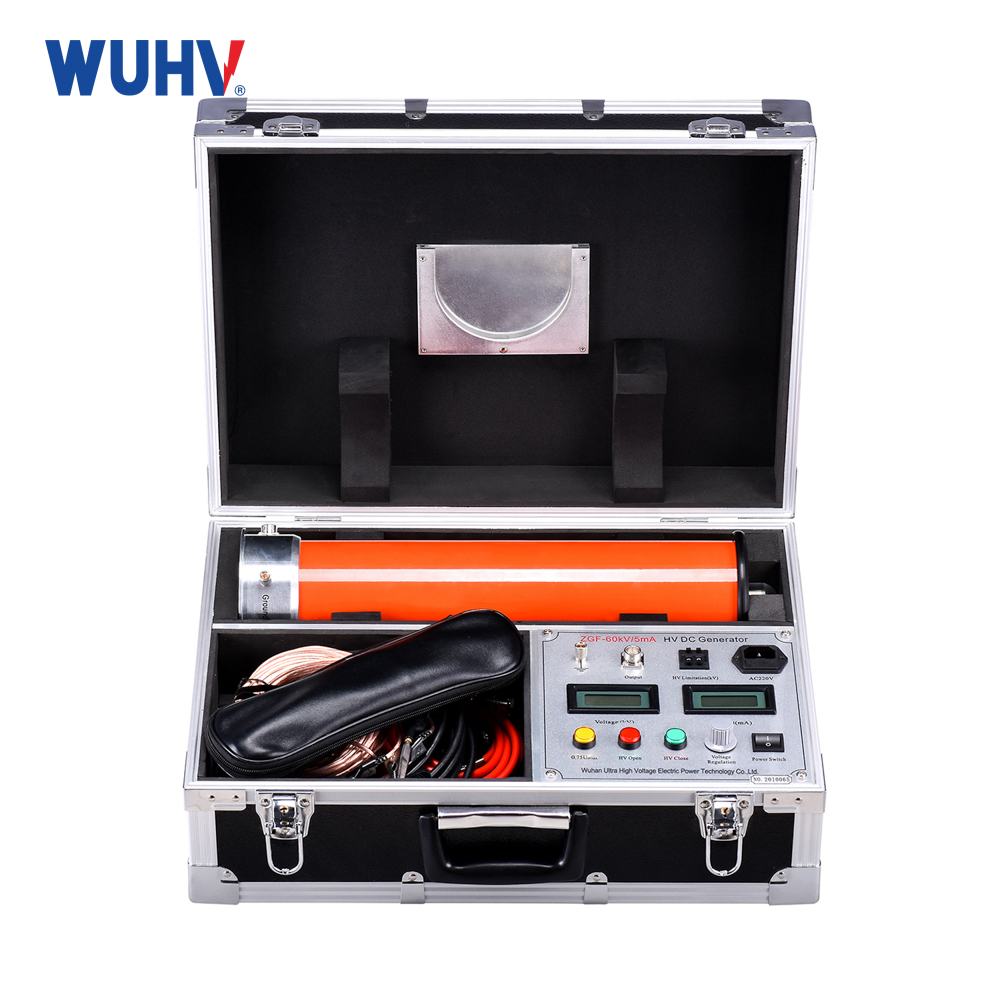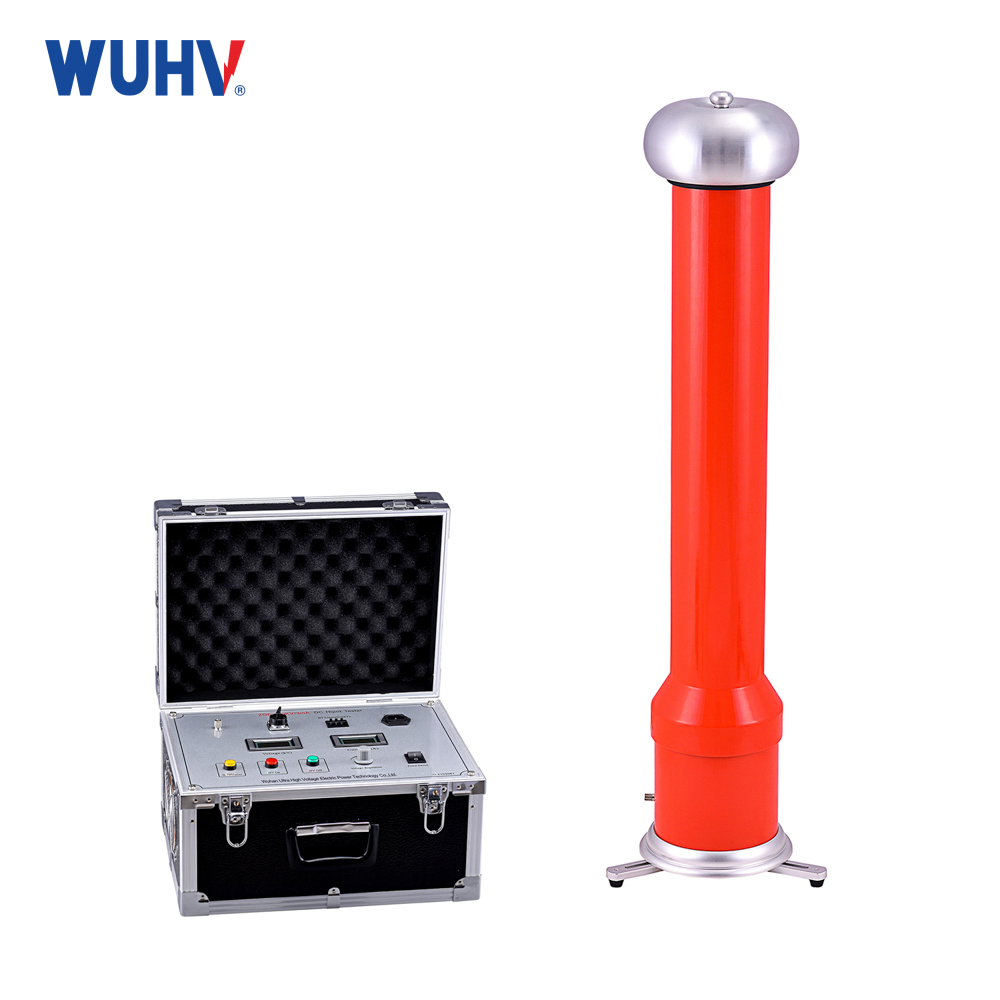The cable fault tester under Wuhan UHV can help many power workers conduct various power tests more conveniently.
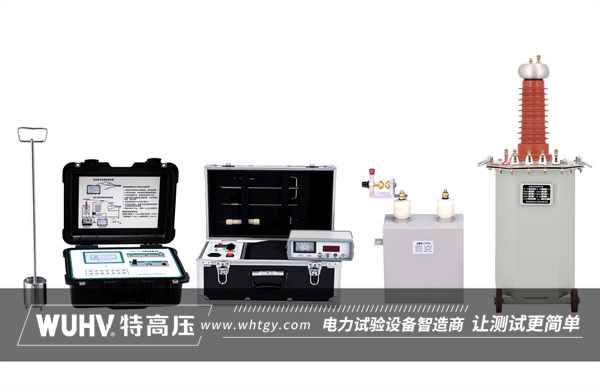
High voltage pulse method or pulse reflection method (commonly referred to as high voltage pulse reflection method in cable fault detection) is a cable fault detection technique that combines the principles of high voltage pulse technology and pulse reflection method to determine high resistance fault points in cables. The following is a detailed explanation of the high-voltage pulse method or pulse reflection method:
definition
High voltage pulse reflection method is a cable fault detection method that applies a high-voltage pulse signal at one end of the cable and uses the reflected signal generated by impedance mismatch points (such as fault points) encountered during the propagation of the pulse signal in the cable to locate the fault.
working principle
High voltage pulse signal transmission: At one end of the cable, a high voltage pulse signal is generated by a high voltage pulse power supply device and applied to the cable.
Signal propagation and reflection: High voltage pulse signals propagate along cables, and when encountering fault points in the cable (such as high impedance faults), reflection signals are generated due to impedance mismatch.
Reflection signal reception and analysis: The cable fault tester receives and records the reflected pulse signal. By analyzing the time difference between the transmitted pulse signal and the reflected pulse signal, as well as the known propagation speed of the pulse signal in the cable, the distance from the fault point to the test point can be calculated.
characteristic
Suitable for high resistance faults: The high-voltage pulse reflection method is particularly suitable for detecting high resistance faults in cables, such as faults caused by insulation aging, insulation medium moisture, etc.
High detection accuracy: By accurately measuring the time difference of pulse signals, high fault localization accuracy can be achieved.
Relatively complex operation: Compared to the low-voltage pulse method, the high-voltage pulse reflection method requires higher operational skills and experience to ensure safe and accurate detection.
matters needing attention
Safe operation: Due to the involvement of high-voltage pulse signals, safety regulations must be strictly followed during operation to ensure the safety of personnel and equipment.
Choosing the appropriate pulse voltage: Based on the type of cable and fault characteristics, selecting the appropriate pulse voltage can improve the accuracy and efficiency of detection.
Analyzing the reflected signal: The waveform and characteristics of the reflected signal can provide additional information about the type and severity of the fault, so careful analysis of the reflected signal is necessary.
induce
High voltage pulse method or pulse reflection method is a technique for cable fault detection that utilizes high-voltage pulse signals and pulse reflection principles. It is particularly suitable for detecting high resistance faults, with characteristics such as high detection accuracy and relatively complex operation. In practical applications, it is necessary to pay attention to safe operation, select appropriate pulse voltage, and analyze reflected signals.






